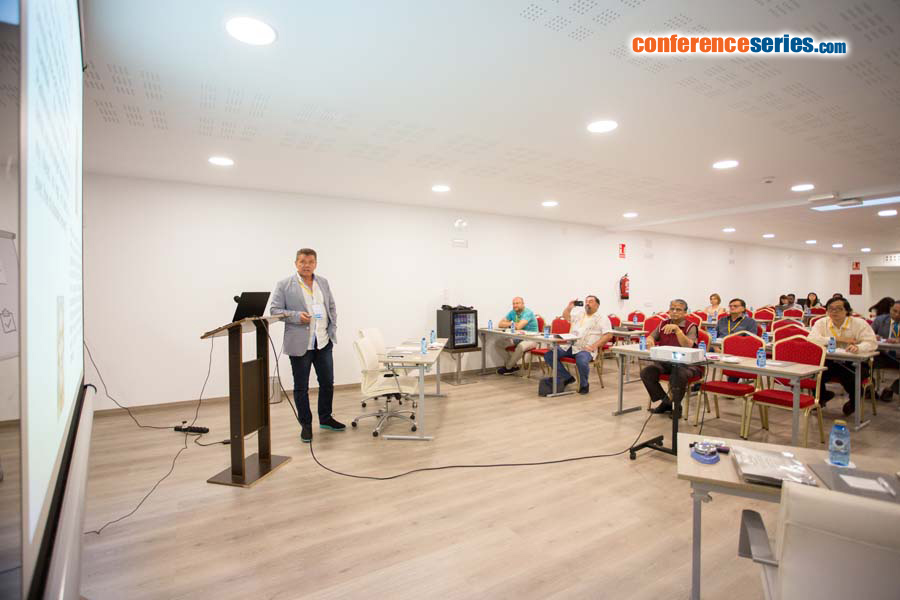
Dimitar Maslarov
Medical University of Sofia, Bulgaria
Title: Current therapy of Parkinson's disease
Biography
Biography: Dimitar Maslarov
Abstract
Parkinson's disease (PD) is a disease, which encompasses the central nervous system. Symptoms start gradually, sometimes in just one hand. Th is condition usually is the reason for rigidity and tremor. Even though PD is not curable, some medicines could considerably improve the symptoms.
Medications: PD patients possess low levels of dopamine in their brains. The idea of medication is to increase or substitute for dopamine.
Levodopa-carbidopa: Th e drug that goes through the human brain barrier and turns into dopamine is levodopa which is combined with carbidopa.
Levodopa-carbidopa infusions: Patients with advanced PD disorder can still be influenced by Carbidopa-levodopa, however their response is variable. Yet, it's administered through a feeding tube that delivers the medication in a gel form directly to the small intestine. Dopamine agonists imitate the consequences of the dopamine on the brain. They consist pramipexole, rotigotine and
ropinirole. For fast alleviation can be used the Apomorphine, which is a short-acting injectable dopamine agonist. Monoamine oxidase B (MAO-B) Inhibitors contain selegiline, rasagiline and safi namide. Their function is to avoid the failure of the dopamine in the brain via constraining the MAO B enzyme of the brain. Catechol-O-methyl transferase (COMT) inhibitors – entacapone slightly extends the outcome of levodopa treatment through interlocking the enzyme which demolishes dopamine. One more COMT inhibitor is the Tolcapone, which can hardly be given to patients because of a danger of severe liver harm and liver failure.
Anticholinergics: Medicines used for decades to assist the tremor related with PD.
Amantadine: Amantadine alone provide short-term relief of symptoms of early PD. It could be combined with Carbidopalevodopa treatment throughout the advanced phases of PD to regulate the dyskinesias.
Surgical Procedures: In deep brain stimulation (DBS), are implant electrodes into the subthalamic nucleus or the globus pallidus
interna. DBS may steady the medicine variations, to decrease or stop dyskinesias, to diminish tremor and the rigidity. Also, can prevent slowing down patients’ actions. Treatment of PD should be personalized.
Recent Publications :
1. Connolly BS, Lang AE. Pharmacological treatment of Parkinson disease: A review. JAMA 2014; 311:1670.
2. Ferreira JJ, Katzenschlager R, Bloem BR, et al. Summary of the recommendations of the EFNS/MDS-ES review on therapeutic management of Parkinson's disease. Eur J Neurol 2013; 20:5.
3. Ferreira JJ, Lees A, Rocha J-F, Poewe W, Rakol O, Soares-da-Silva P. for the Bi-Park 1 investigators (Dimitar Maslarov, Bulgaria, First MHAT-Sofi a, Clinic of nerve diseases, 8 patients enrolled). Opicapone as an anjunct to levodopa in patients with Parkinson’s disease and end-of-dose motor fl uctuations: a randomized, double-blind, controlled trial. Lancet Neurol, 2015, published online Dec, 22 2015, http://dx.doi.org/10.1016/S1474-4422(15)00336-1.
4. Olanow CW, Watts RL, Koller WC. An algorithm (decision tree) for the management of Parkinson's disease (2001): treatment guidelines. Neurology 2001; 56:S1.
5. Rogers G, Davies D, Pink J, Cooper P. Parkinson's disease: summary of updated NICE guidance. BMJ 2017; 358:j1951.




